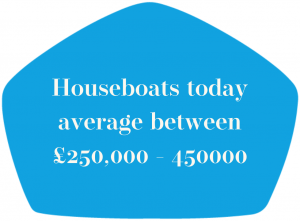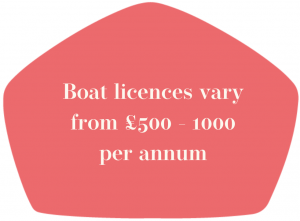Bricks On Water
Making a splash
Richard Branson wasn’t always a billionaire. The guy who now has his own island, makes regular jaunts into space and is worth an estimated $5.7 billion was once unable to afford a home, so moved into a houseboat.
When Branson arrived in London in the late 1960s, he spent £2,000 on a houseboat moored in Little Venice, which he named Duende. From this boat, Branson launched his Virgin label, which began as a mail-order record company before evolving into the behemoth we know today. Despite claims from the locals that the boat was an ‘eyesore’, Branson loved it, raising his young family there and working from it, even when Virgin opened London based offices.
But while this affordable investment paid dividends for Branson – providing him with a cheap place to live and work – is living on a houseboat really all it’s cracked up to be in the 21st century?
A personal bubble
While interest in water-based living has been rising steadily for years as a cheaper alternative to bricks and mortar purchases, 2020 saw a massive surge in interest in houseboats thanks to the lockdowns.
For many the draw is the lifestyle. If you moor in a marina, you benefit from an almost village-like community in the middle of the city. It’s also an idyllic looking life – water lapping at the side of your home, feeding the ducks and pottering down the canal whenever you fancy a change of scenery.

But while there are financial incentives to purchasing a houseboat – they are generally much more affordable than flats or houses and most are exempt from stamp duty – they aren’t necessarily as cheap as you’d imagine. Branson benefitted from the more attainable prices of the 1960s, but houseboats today can still average between £250,000 – 450,000.
While you can get some for under £50,000, you will get what you pay for and you’re likely to be saddled with a money pit requiring thousands in repairs and upkeep.
Keeping yourself afloat
And don’t forget about those hidden costs – you’ll need to pay for your mooring, which will be determined by the length of the boat and will vary in price, depending on how desirable the location is.
Very few permanent moorings are available, so while you may own your floating home, you will likely be renting the space for it either on a monthly or yearly basis, and you will also be limited by the rules of the mooring as some do not rent to residential boats.
To save money, you could become a ‘continuous cruiser’, which means you regularly move your boat on so you aren’t tied to one mooring. However, the time you’re allowed to stay for free can vary from anything from 48hrs to 14 days.

You will also need a boat licence, which varies from £500 – 1000 per annum and, if you live on a residential mooring, you may need to pay council tax.
So there is a lot to consider – even before you factor in regular upkeep like having your hull scraped every 7-10 years.
A bohemian lifestyle
As with all things off the beaten track, you will struggle to get a mortgage for your houseboat – because they just don’t appreciate in value the way homes on dry land do. Investing in bricks and mortar will see a reliable financial return in the future, while most houseboats tend to depreciate in value in the same way that cars do ( some retro cars on the other hand can be a worthy investment )
If you tackle it the way Branson did, as a short-term solution that could help you save towards a more traditional investment in the future, a life on the ocean wave could well be the right choice for you.
But don’t be dazzled by the glamour of a bohemian lifestyle and find yourself drowning in unplanned expenses in the future.